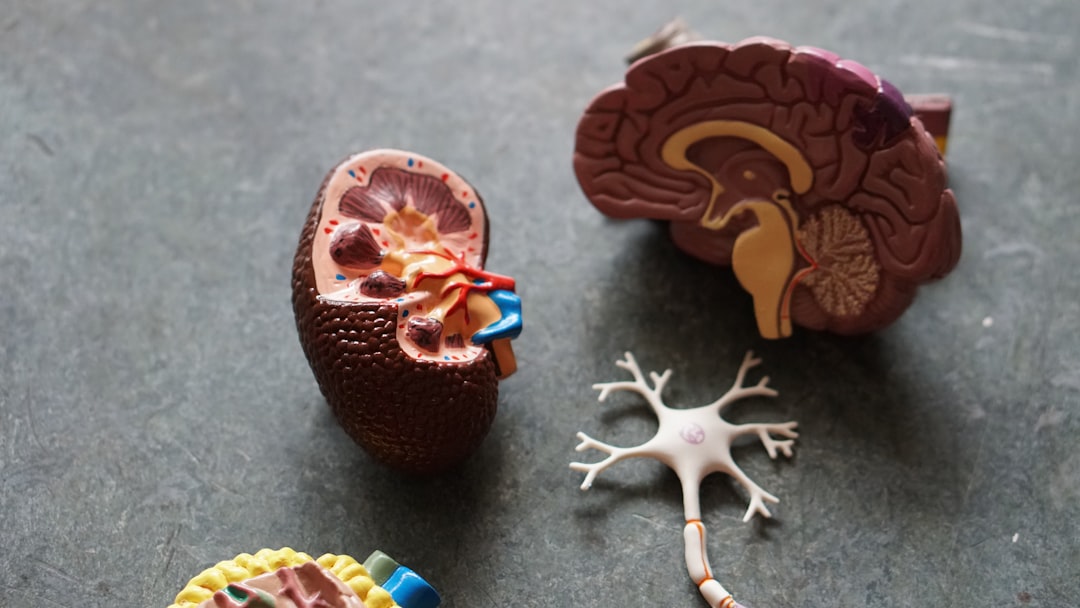What is it about?
The action of thyroid hormones (THs) in the brain is strictly regulated, since these hormones play a crucial role in the development and physiological functioning of the central nervous system (CNS). Disorders of the thyroid gland are among the most common endocrine maladies. Therefore, the objective of this study was to identify in broad terms the interactions between thyroid hormone states or actions and brain development. THs regulate the neuronal cytoarchitecture, neuronal growth and synaptogenesis, and their receptors are widely distributed in the CNS. Any deficiency or increase of them (hypo- or hyperthyroidism) during these periods may result in an irreversible impairment, morphological and cytoarchitecture abnormalities, disorganization, maldevelopment and physical retardation. This includes abnormal neuronal proliferation, migration, decreased dendritic densities and dendritic arborizations. This drastic effect may be responsible for the loss of neurons vital functions and may lead, in turn, to the biochemical dysfunctions. This could explain the physiological and behavioral changes observed in the animals or human during thyroid dysfunction. It can be hypothesized that the sensitive to the thyroid hormones is not only remarked in the neonatal period but also prior to birth, and THs change during the development may lead to the brain damage if not corrected shortly after the birth. Thus, the hypothesis that neurodevelopmental abnormalities might be related to the thyroid hormones is plausible. Taken together, the alterations of neurotransmitters and disturbance in the GABA, adenosine and pro/antioxidant systems in CNS due to the thyroid dysfunction may retard the neurogenesis and CNS growth and the reverse is true. In general, THs disorder during early life may lead to distortions rather than synchronized shifts in the relative development of several central transmitter systems that leads to a multitude of irreversible morphological and biochemical abnormalities (pathophysiology). Thus, further studies need to be done to emphasize this concept.
Featured Image
Why is it important?
In general, thyroid hormones have some actions that might be useful therapeutically, but others that are deleterious. Potential therapeutically useful actions include those to induce weight loss and lower plasma cholesterol levels. Potential deleterious actions are those on the heart to induce tachycardia and arrhythmia, on bone to decrease mineral density, and on muscle to induce wasting. It is worth mentioning that, together with the previous studies, the current review throw up a number of important findings. Thyroid hormones are a key regulatory factor of the brain developmental program. During development, the role of thyroid hormone is the coordination of seemingly unrelated maturational processes. These processes are influenced by the hormone only temporarily during overlapping windows of development with regional specificity. The cellular basis for these effects lies in the organizational role of TH in neuronal migration, synaptogenesis and differentiation of multiple cell types. Thus, any vigorous changes in the thyroid hormones levels during the critical periods of the development may cause a serious damage to the structural development and organization of the brain, and irreversible morphological and cytoarchitecture abnormalities including altered cell migration, delay in maturation of neurons and glial cells, reduction of synapses, myelination deficits, changes in the number of particular cell populations. Hyper- or hypothyroidism may affect directly or indirectly the neuronal and glial cell types and lead to disruption in the interactions of thyroid with neurotransmitters, GABA, adenosine and pro/antioxidant systems during CNS development. Lastly, this severe effect may be responsible for the loss of neurons vital functions and may lead, in turn, to the biochemical dysfunctions (pathophysiology) and the reverse is true. Because signs of nervous system dysfunction develop in hypothyroid and hyperthyroid individuals, it is possible that even relatively small deviations of brain iodocompound economy can produce significant changes in behavior and autonomic nervous system function. We summarized the previous findings in the following Fig. 12. We hope this review will serve the purpose not only of summarizing the different states of thyroid hormones on CNS development but also of illuminating gaps in our knowledge such as those mentioned.
Perspectives
The resolution of this issue will require additional evidence at a molecular level either demonstrating a direct action of the thyroid hormones on the fetal brain or additional evidence supporting the suggestion that the observed effects of maternal hypo- or hyperthyroidism on fetal development are explained by impaired gestation. Thus, whether the adverse effects of maternal hypo- or hyperththyroidism on fetal development are mediated directly by loss of the maternal hormones contribution to the fetus, indirectly by metabolic impairment of gestation, or both. In addition, future attention should be focused on identifying a nongenomic approach because of there is scant evidence and these actions of TH differ across the developmental time and brain region. More information is needed to determine which environmental chemicals interact with the thyroid hormone system and to understand the site and mechanism of action of these environmental chemicals during brain development. Thus, it is critical to improve animal models of thyroid disruption as well as advance our ability to translate animal data to human risk. To accomplish this goal it is important to increase the use of ‘‘-omics’’ technology (e.g., toxicogenomics, proteomics and metabonomics), develop and use new imaging technologies, develop and use genetic models of thyroid hormone receptor defects or deficiency, and increase multidisciplinary and interdisciplinary research projects. Furthermore, studies are required to identify any variations or polymorphisms in elements of the pathway of thyroid hormone action, e.g., T3/ rT3 ratio, deiodinase or transporter polymorphisms which predict the psychological response to thyroid hormone or correlate with other potentially thyroid hormone related effects (eg sleep parameters, echocardiographic changes or changes in bone turnover).
Full Professor Ahmed R. G.
Division of Anatomy and Embryology, Zoology department, Faculty of Science, Beni-Suef University, Egypt.
Read the Original
This page is a summary of: Thyroid hormones states and brain development interactions, International Journal of Developmental Neuroscience, October 2007, Wiley,
DOI: 10.1016/j.ijdevneu.2007.09.011.
You can read the full text:
Resources
Contributors
The following have contributed to this page










